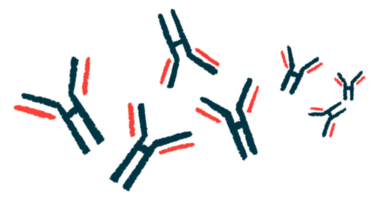Chaperone proteins may help lower alpha-synuclein in Parkinson’s
Study offers new evidence that neuroinflammation is key driver of disease

Higher levels of proteins called chaperones are linked with lower levels of disease-driving toxic protein clumps in the brains of people with Parkinson’s disease, a new study shows.
The findings suggest that increasing chaperone proteins may be a viable therapeutic strategy for Parkinson’s. Data from the study also revealed new evidence suggesting that inflammation within the brain, called neuroinflammation, is a key driver of Parkinson’s.
The study, “Single-cell transcriptomic and proteomic analysis of Parkinson’s disease brains,” was published in Science Translational Medicine.
The underlying causes of Parkinson’s disease are poorly understood. One of its molecular hallmarks is toxic clumps of the protein alpha-synuclein that spread through brain cells, which are thought to help drive disease progression. Neuroinflammation is also a feature of Parkinson’s, but researchers haven’t figured out if inflammation is a cause of the disease or just a consequence of other processes that cause damage in the brain.
To better understand the mechanisms driving the disease, researchers analyzed cells in the brains of six deceased people with late-stage Parkinson’s and compared them with six brains from people without the disease.
Alpha-synuclein, chaperone levels in Parkinson’s
The researchers performed two types of analyses. First, they used transcriptomics, or the study of all the genetic information in a particular cell type, to evaluate the gene expression profiles of cells, that is, which genes are turned on or off. Then they conducted proteomics to examine levels of different proteins in the brain cells. By integrating the two analyses, they were able to get a fairly comprehensive overview of the architecture of brain cells in Parkinson’s.
“Before the advent of these technologies, we couldn’t interrogate human tissue to get insights into disease progression,” Sreeganga Chandra, PhD, associate professor at Yale and co-author of the study, said in a university news story. “These analyses will help inform our future experiments and are a platform to raise pertinent questions that we can test.”
The researchers saw that brains with lower toxic alpha-synuclein tended to have higher levels of chaperones, proteins that help other proteins stabilize and maintain their normal, healthy shape.
The finding suggests chaperone proteins may be a valuable target to treat Parkinson’s. “If we could increase chaperone capacity in the brain, we could potentially decrease the abnormal aggregation associated with Parkinson’s,” Chandra said.
The researchers also found that people with Parkinson’s have higher counts of certain types of inflammatory immune cells, namely T-cells and microglia, along with signs of enhanced neuroinflammation in nerve cells. This finding “is one more piece of the puzzle that suggests the importance of inflammation as a cause of the disease,” said study co-author David Hafler, MD.
The researchers compared the findings from Parkinson’s patients with results from studies that performed similar analyses in the brains of people with Alzheimer’s disease, another neurological disorder.
“We wanted to compare the two most common neurodegenerative diseases,” said Le Zhang, PhD, another co-author.
Unexpectedly, the data suggested there was little overlap in how nerve cells were affected in the two conditions, even though there were some similarities in how glia, support cells that help nerves to stay healthy and functional, are affected. These findings could help inform what treatment strategies may work in both conditions and which are unlikely to translate from one to the other.
“Parkinson’s and Alzheimer’s are clinically different diseases that have different mechanisms and therefore the options to treat them will be different,” Chandra said. “These analyses will help inform our future experiments and are a platform to raise pertinent questions that we can test.”







